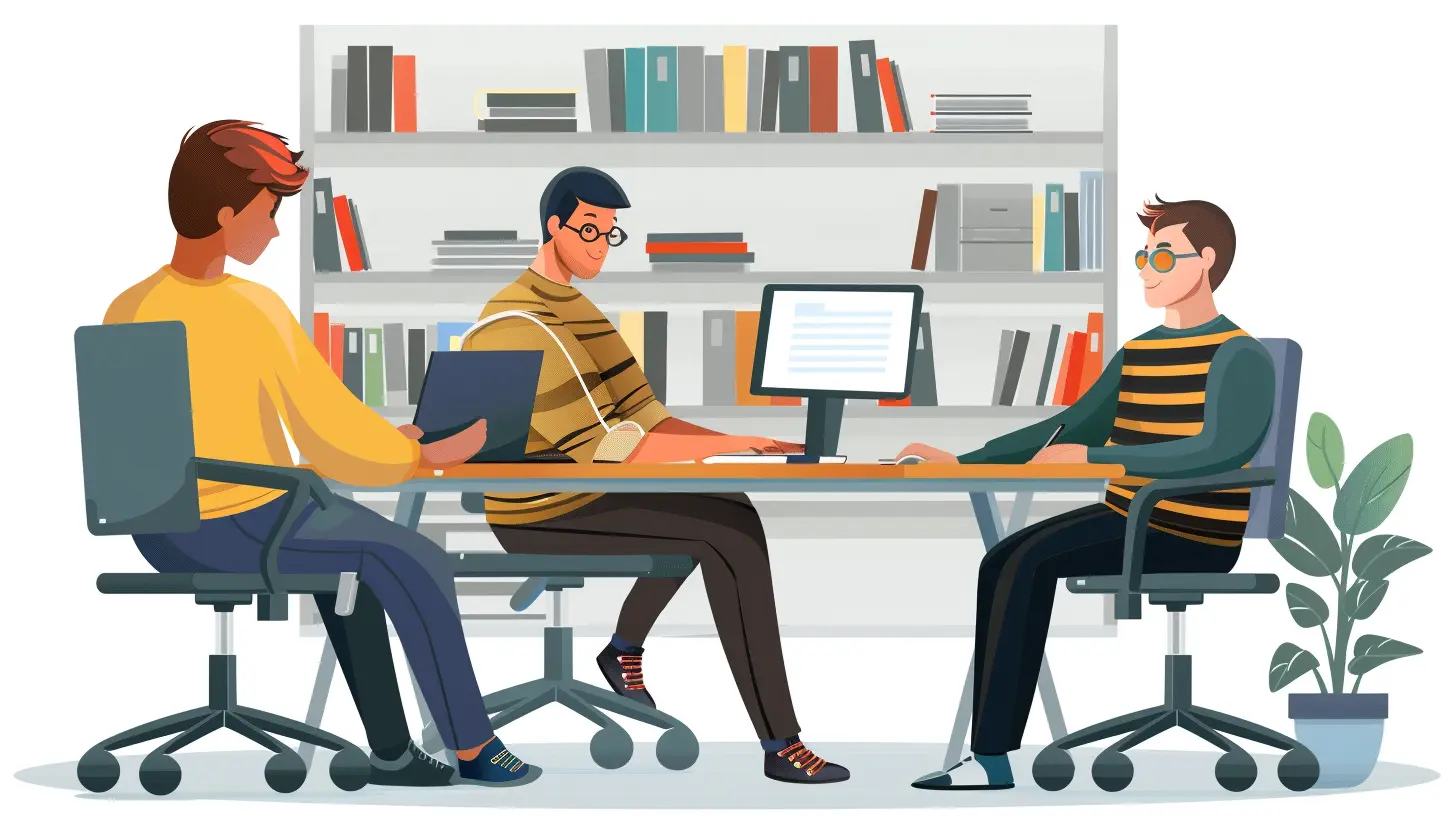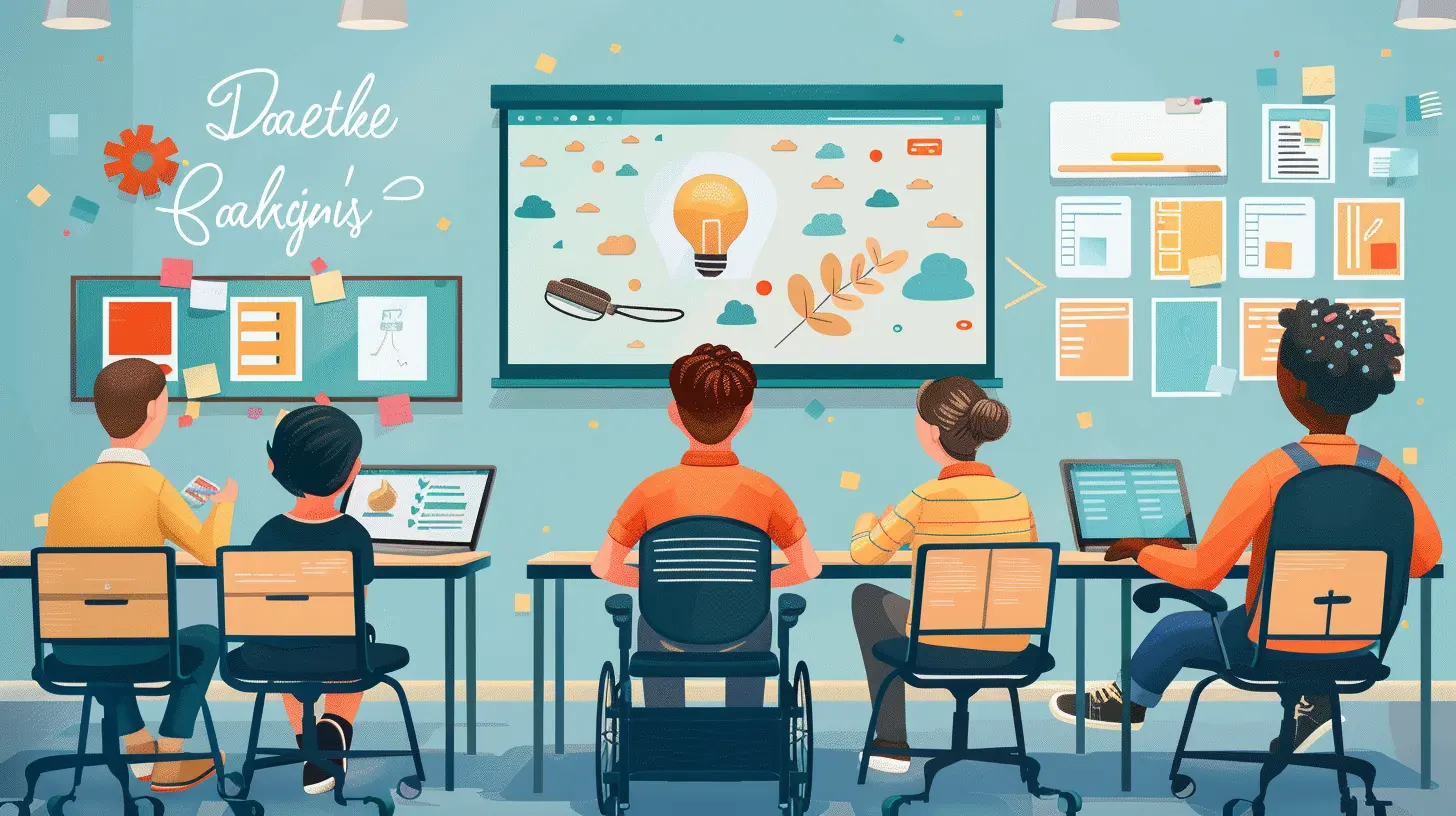How to Make E-Learning More Inclusive for Students with Disabilities
29 August 2025
E-learning has taken the world by storm, and let’s be honest—it's convenient, flexible, and often more accessible than traditional classrooms. But what about students with disabilities? Are we really keeping everyone in the loop? The truth is, not always. Inclusive e-learning is not just a buzzword—it's a necessity.
In this guide, we'll dive deep into how to make e-learning more inclusive for students with disabilities. Whether you’re an educator, instructional designer, admin, or just someone who cares, this article is your roadmap to doing it right.
Why Inclusive E-Learning Matters
Picture this: you're hosting an online course, and half your students can’t see the videos, hear the audio, or navigate the platform. Frustrating, right? That’s what many students with disabilities face every day.Inclusivity means giving everyone an equal shot at learning, regardless of their physical, sensory, or cognitive challenges. It’s about breaking down digital barriers and creating environments where everyone feels like they belong.
The Most Common Types of Disabilities in E-Learning
Before we jump into practical changes, understanding the variety of disabilities is key. Each group may need a different approach:- Visual impairments – Includes blindness and low vision.
- Hearing impairments – Deafness or partial hearing loss.
- Motor disabilities – Conditions that make it hard to use a mouse or keyboard.
- Cognitive or learning disabilities – Dyslexia, ADHD, autism, and others that affect comprehension or focus.
- Speech impairments – Difficulty communicating verbally.
Keep in mind, students can experience more than one type of disability at once. So think: flexibility, flexibility, flexibility.
Build On Accessibility from Day One
It’s easier to bake a cake with the right ingredients from the start than trying to fix it after it’s baked, right? The same goes for e-learning design. Accessibility should be part of the plan from the beginning—not an afterthought.Use Accessible Learning Platforms
Not all Learning Management Systems (LMS) are created equal. Choose platforms that follow WCAG (Web Content Accessibility Guidelines) and offer:- Keyboard navigability
- Screen reader compatibility
- Adjustable text sizes
- Captioning options
- Custom color contrast settings
You’d be surprised how far these simple features go in helping students learn with confidence.
Design with Universal Access in Mind
Universal Design for Learning—or UDL—is like building a learning space with a ramp instead of stairs. It means designing lessons that offer multiple ways for students to get and show what they’ve learned.Ask yourself:
- Can students read the material in different formats?
- Can they submit their assignments in various ways?
- Is the content clear and easy to follow?
Designing for flexibility helps everyone, not just students with special needs.
Create Accessible Content Like a Pro
Now comes the fun part—content! You’ve got videos, PDFs, presentations, quizzes—but are they actually usable by all your students?1. Caption Videos and Use Transcripts
This one is a biggie. It helps not only students who are deaf or hard of hearing but also students in noisy environments. Closed captions help retention—period.Also, provide full transcripts that can be read with screen readers or printed out.
2. Use Alt Text for Images
Images tell a thousand words, but not if you can’t see them. Adding alt text (a brief image description) helps students who use screen readers understand what’s being shown.Be descriptive but concise. For example, instead of “Image,” say “Bar graph showing enrollment trends from 2015-2020.”
3. Keep Text Simple and Clean
Don’t go overboard with fancy fonts or colors that scream for attention. Use clear fonts like Arial or Verdana, and ensure sufficient color contrast (dark text on a light background works best).Break up long paragraphs into bite-sized chunks. Bullet points and numbered lists can be lifesavers for students with focus issues.
4. Offer Multiple Formats
Ever heard the saying “one size fits none”? That applies to learning, too. Provide content in different formats—PDFs, audio recordings, videos, even interactive slides.Some students might grasp a concept better through visuals, others by listening. And others? They might want to read it quietly with a cup of tea. Let them choose.
Use Assistive Technology the Right Way
Technology is a game-changer—when used right.There’s a whole world of tools out there designed to support students with disabilities:
- Screen Readers: JAWS, NVDA, and VoiceOver.
- Text-to-Speech Tools: NaturalReader, Speechify.
- Speech-to-Text Tools: Dragon NaturallySpeaking, Google Voice Typing.
- Alternative Input Devices: Eye-tracking systems, adaptive keyboards, or switches.
Here’s the trick: make sure your e-learning platform and content work well with these tools. Test them out. Get feedback. Fix what doesn’t work.
Consider Interactivity — But Keep It Accessible
Gamified quizzes, drag-and-drop elements, or interactive timelines are awesome—but only if everyone can use them.If your interactive content can’t be navigated with a keyboard or described by a screen reader, it's more frustrating than helpful.
Always provide alternatives. For drag and drop, offer a list-based version. Add written descriptions to game elements. Think of it as adding subtitles to a foreign-language movie—suddenly, it’s not so foreign anymore.
Inclusive Communication and Feedback
Learning isn’t a one-way street. Students need to ask questions, participate in discussions, and get feedback.Make Discussion Boards Inclusive
Use plain English, avoid overloaded jargon, and encourage others to do the same. Moderate with empathy. Students with cognitive disabilities might express themselves differently—give them space.Offer Flexible Feedback Options
Instead of just written comments, why not try voice notes or video messages? That personal touch can make all the difference and support different processing styles.And always be open to feedback on your course accessibility. Who better to guide improvements than the students themselves?
Train the Teachers and Designers
Guess what? Even the fanciest platform and most inclusive course won’t work if the instructors don’t know how to use them properly.Provide Accessibility Training
Offer regular training on:- Creating accessible lectures and resources
- Using alternative communication styles
- Understanding disability etiquette
- Adapting assessments and grading fairly
If teachers are more aware, students benefit. It’s that simple.
Creating an Inclusive Mindset
Inclusion isn’t just technical; it’s cultural. You can check all the boxes and still have a course that doesn’t feel welcoming.Promote inclusivity by:
- Representing diversity in course content
- Encouraging peer support groups
- Sharing success stories from students with disabilities
Remember, when students feel seen and valued, they perform better. A supportive vibe can move mountains.
Common Pitfalls to Avoid
Let’s save you some headaches. Avoid these common missteps:- Ignoring accessibility during course development
- Using auto-generated captions without review
- Overloading pages with cluttered design
- Assuming one solution fits all disabilities
- Not testing your content with assistive tech
- Failing to ask for student input
Mistakes happen—it’s how you respond that counts.
Wrapping It Up
Creating inclusive e-learning isn’t rocket science, but it does take intention. You’re not just checking boxes; you’re building a space where every student—no matter their ability—can thrive.Think of it like building a house. Accessibility is the foundation. Good content is the walls. Inclusive culture? That’s the roof that holds everything together.
So the next time you put together an online course, pause and ask, “Would this work for everyone?” If the answer’s “not yet,” now you know exactly what to do.
With a little extra effort and a lot of heart, you can make learning a place where no one is left behind.
all images in this post were generated using AI tools
Category:
E LearningAuthor:

Anita Harmon
Discussion
rate this article
1 comments
Leona Hubbard
Interesting insights! What else?
September 19, 2025 at 11:26 AM

Anita Harmon
Thank you! I also discuss the importance of flexible content formats, accessible technology, and ongoing feedback from students to enhance inclusivity.


